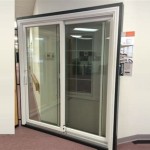```html
Covered Patio Plans: Do It Yourself
A covered patio significantly enhances outdoor living spaces, providing shelter from sun, rain, and other elements. Constructing a covered patio as a do-it-yourself (DIY) project offers cost savings and the satisfaction of personal accomplishment. Successful DIY covered patio projects require meticulous planning, adherence to building codes, and a practical understanding of construction techniques. This article outlines key considerations and steps involved in designing and building a covered patio.
Planning and Design Considerations
The initial phase of a DIY covered patio project involves creating a detailed plan. This plan should encompass design aesthetics, functionality, material selection, and adherence to local building regulations. Neglecting this crucial stage can lead to structural issues, code violations, and ultimately, an unsatisfactory outcome.
First, assess the existing patio area. Measure the dimensions to determine the available space for the covered structure. Consider the existing landscaping and how the covered patio will integrate with the surrounding environment. Identifying potential obstacles, such as trees or utility lines, is crucial at this stage.
Next, define the intended use of the covered patio. Will it primarily serve as a dining area, a relaxation space, or an entertainment zone? The intended use will influence the size and design of the structure. For example, a dining area requires more space and potentially a designated area for a grill, while a relaxation space may benefit from comfortable seating and ambient lighting.
Consider the aesthetic style of the covered patio. It should complement the existing architectural style of the house. Common styles include traditional, modern, and rustic. Select materials and finishes that align with the chosen style. For instance, a traditional style might incorporate wood beams and brick columns, while a modern style might feature sleek metal framing and glass panels.
Crucially, research local building codes and regulations. Most municipalities require building permits for covered patio construction. These regulations typically specify setbacks from property lines, structural requirements, and compliance with safety standards. Contact the local building department to obtain the necessary permits and ensure the project adheres to all applicable codes. Failure to comply can result in fines or mandatory alterations to the structure.
Develop a detailed set of plans, including structural drawings, material lists, and construction schedules. These plans serve as a roadmap for the project and are essential for obtaining building permits. Consider consulting with a structural engineer or architect if the design is complex or if there are concerns about structural integrity.
Finally, create a realistic budget that accounts for all material costs, permit fees, and potential unforeseen expenses. Obtain multiple quotes from different suppliers to ensure competitive pricing. It's also prudent to allocate a contingency fund to cover unexpected issues that may arise during construction.
Material Selection and Construction Techniques
Choosing the appropriate materials and employing proper construction techniques are paramount to the longevity and safety of the covered patio. The selection process should consider durability, weather resistance, and aesthetic appeal.
For the framing of the covered patio, consider using pressure-treated lumber, steel, or aluminum. Pressure-treated lumber is a cost-effective option that resists rot and insect infestation. Steel provides superior strength and durability, while aluminum is lightweight and corrosion-resistant. The choice will depend on the design, budget, and local climate.
The roofing material should be selected based on its ability to withstand weather conditions and complement the architectural style of the house. Common options include asphalt shingles, metal roofing, polycarbonate panels, and wood. Asphalt shingles are a cost-effective and widely available option, while metal roofing offers superior durability and longevity. Polycarbonate panels provide natural light while offering protection from UV rays. Wood roofing adds a rustic charm but requires regular maintenance.
Choose appropriate materials for the columns or posts that support the structure. Options include wood, brick, stone, and concrete. Wood columns should be pressure-treated and properly sealed to prevent rot. Brick, stone, and concrete columns offer excellent durability and aesthetic appeal. Ensure the columns are properly footed and anchored to provide adequate support for the roof.
When constructing the frame, ensure all lumber is properly measured, cut, and joined. Use appropriate fasteners, such as screws or nails, to secure the connections. Verify that the frame is level and plumb before proceeding with the next stage of construction. Any inaccuracies in the framing can lead to structural problems and an aesthetically unappealing result.
Install roofing materials according to the manufacturer's instructions. Proper installation is crucial to prevent leaks and ensure the roof provides adequate protection from the elements. Pay close attention to flashing details around edges and penetrations to prevent water intrusion.
Consider adding features such as gutters and downspouts to manage rainwater runoff. Gutters should be properly sized and installed to effectively channel water away from the covered patio. Downspouts should discharge water away from the foundation of the house to prevent water damage.
If including electrical wiring for lighting or outlets, adhere to all electrical codes and regulations. It's advisable to hire a qualified electrician to perform electrical work to ensure safety and compliance.
Finally, apply appropriate finishes to protect the materials from the elements and enhance their aesthetic appeal. Paint or stain wood surfaces to prevent rot and weathering. Seal concrete or stone surfaces to prevent staining and cracking.
Foundation and Structural Integrity
The foundation and structural integrity are crucial for the long-term stability and safety of the covered patio. A well-designed and properly constructed foundation ensures that the structure can withstand wind loads, snow loads, and other environmental factors. Neglecting these aspects can lead to structural failure and potential safety hazards.
Determine the appropriate type of foundation based on soil conditions and local building codes. Common options include concrete footings, concrete piers, and concrete slabs. Concrete footings are typically used for supporting columns or posts. Concrete piers provide a stable base for the structure, while concrete slabs offer a continuous surface for the patio area.
Properly prepare the ground for the foundation. Excavate the soil to the required depth and compact the base material. Ensure the soil is properly drained to prevent water accumulation around the foundation. Install reinforcing steel, such as rebar, to enhance the strength and durability of the concrete.
When pouring concrete, ensure it is properly mixed and placed. Use a concrete vibrator to consolidate the concrete and remove air pockets. Level the surface and allow the concrete to cure properly before proceeding with the next stage of construction. Proper curing is essential for achieving maximum strength and durability.
Ensure that the posts or columns are securely attached to the foundation. Use appropriate anchors and fasteners to create a strong and rigid connection. The posts should be plumb and aligned to ensure the structure is level and stable.
The roof structure should be designed to withstand anticipated wind and snow loads. Consult with a structural engineer to determine the appropriate size and spacing of rafters and beams. Use hurricane ties or other connectors to secure the roof structure to the posts or columns.
Regularly inspect the covered patio for signs of structural damage, such as cracks, sagging, or rot. Address any issues promptly to prevent further deterioration. Proper maintenance and repairs will extend the lifespan of the structure and ensure its continued safety.
By adhering to these key points and meticulously planning each stage of the project, individuals can successfully construct a covered patio that enhances their outdoor living space and provides years of enjoyment.
```
Patio Cover Plans Look More At Http Besthomezone Com 17720 Diy Covered

Patio Cover Plans Build Your Or Deck

11 Patio Cover Ideas Anyone Can Diy The Garden Glove

Patio Cover Plans Build Your Or Deck

11 Patio Cover Ideas Anyone Can Diy The Garden Glove

Patio Cover Plans Build Your Or Deck

Building A Patio Cover Plans For An Almost Free Standing Roof

6 Free Pergola Plans Plus Pavilions Patios And Arbors Building Strong
Building A Covered Patio With 30ft Span The Awesome Orange

How To Build A Freestanding Patio Cover With Best 10 Samples Ideas
Related Posts








